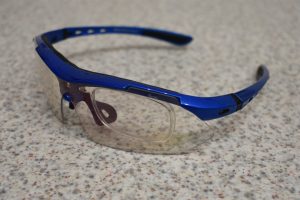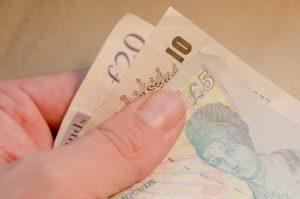Twenty Tips For New Cyclists

Twenty Tips for New Cyclists
If you’ve come to the page because you’re new to the world of cycling then you’ll find twenty quick tips for new cyclists that will prove invaluable. Some will lead on to other larger ‘tips’ which will be linked to from the smaller tip.
If you have a newbie tip that’s not listed here why not let us know about it using the comments box at the bottom. Maybe we’ll expand the list to twenty one tips for new cyclists.
Clothing
Getting this right will make any ride you do much more enjoyable. Getting it wrong will make every ride a chore. The points at which your body interfaces with the bike are where you need to pay most attention.
- Shorts – Without a doubt one of the most important pieces of clothing you will need. Get some padded ones or padded liners for ‘normal’ shorts. You may have to try more than one type
 to find something comfortable with but it’s worth the effort. Also don’t forget that you may need to switch your saddle to obtain maximum comfort.
to find something comfortable with but it’s worth the effort. Also don’t forget that you may need to switch your saddle to obtain maximum comfort. - Gloves – Your hands (specifically palms) will take a fair pounding on the bike. This is because they will be supporting a lot of your upper body weight. You can buy full-finger or fingerless gloves, with a variety of padding styles and materials in the palm. As with shorts you’re likely to have to try more than one pair before you find some you really feel comfortable in.
- Shoes – It’s tempting when you start riding to wear trainers or something similar. However, nothing beats the support you will get from proper stiff soled cycling shoes. Most are designed to be used with clipless pedals but can still be used on traditional flat pedals with a toe clip / strap attached, and when you do decide to make the transition to clipless pedals you already have the shoes.
- Jersey – Whilst the image of the Lycra clad cyclist may not appeal to some, you should certainly consider a proper sports top which will both keep you warm, is breathable and will wick away any sweat. If you don’t want a cycling specific jersey then a sports top may well suffice, or if you want something that isn’t too skin tight many brands are now starting to carry larger sizes that can be worn loose, the most notable probably being Fat Lad at The Back.
The Bike
Having a machine that you can trust and are comfortable with will vastly improve your riding experience. You can spendin excess of £10000 on a bike but you can get as much enjoyment out of a bike costing only £300. Spending more than you need to is an easy trap to fall into.
- Bike choice – If you’re only going to have one bicycle then decide on what type of riding you want to do and get the right bike – trying to ride on the road on a fat tyre mountain bike is going to be laborious and try to ride off road on a skinny tyre road bike is going to be dangerous at best, if not impossible. If you are lucky enough to have or be able to buy more than one bike then
 you may well be able to cater for all terrains.
you may well be able to cater for all terrains. - Bike maintenance – A poorly maintained bike will be more difficult to pedal and again make riding a chore. Most bike shops will be able to offer a range of service options at reasonable rates, and if you want to have a go yourself the tools are readily available and there are plenty of tutorials about to assist.
- Cleaning – This may sound a bit odd, but learn how to do it properly as doing it wrong will not only reduce the life of your frame and components it could even damage them (Don’t use a jet wash). Also do it frequently, dirt and grime built up on the moving parts will increase the wear of those components. Invest in a few specific bike cleaning tools and cleaners and your job will be much easier. Learn how to clean your chain properly, it’s the most at risk from the elements and proper cleaning and oiling will prolong its life massively.
- Running repairs – Learn how to do a few repairs and maintenance tweaks that you may need when out on a ride. At the least learn how to change an inner tube and /or repair a puncture, also learn how the barrel adjusters on your brakes and gear cables work just in case.
- Tools – Carry a small emergency toolkit just in case. You never know when you might need to make running repairs while you’re out on a ride. (see this article for suggestions)
Safety tips for new cyclists
The roads aren’t as dangerous as many would have you believe but you should still take a few basic precautions to help yourself stay safe, and if you’re off roading then some of these suggestions will still work for you.
- Lights – It goes without saying that if you’re riding in anything approaching darkness you will need a decent set of lights to light your way. But what many people forget is that by using ‘tracer
 lights’ front and rear even during daylight hours will help you stand out.
lights’ front and rear even during daylight hours will help you stand out. - Glasses – Don’t be tempted to ride without some form of eye protection. A small stone or flint thrown up from a car or even your own tyre can cause blindness. If its sunny enough then a pair of sunglasses might suffice. However, cycling specific glasses can be bought online quite cheaply. If you need prescription glasses, consult your optician, there are good styles and types available for a very reasonable cost.
- Bright clothing – It’s no coincidence that most cycling specific clothing is brightly coloured. It stands to reason that you shouldn’t wear black when it’s darker, but wearing bright colours all the time will improve your level of visibility.
- Reflective tape – As with clothing anything you do to increase visibility can only help. Adding a few small pieces of reflective tape to the moving parts of your bike (usually pedals and wheels) will just help to make you stand out from the crowd.
- Helmet – We’ve saved the thorniest until last. Helmets are an evocative subject – people love them or hate them. Helmets are not a legal requirement in the UK currently so the choice is yours. We would always advise wearing one but we can’t force you. If you’re cycling abroad check the local laws as helmet laws can vary from country to country.
The Rider
So, you have the bike, the clothes and safety gear but what about the rider? If you haven’t prepared yourself for the ride(s) you want to tackle then you’re only setting yourself up to fail.
- Fitness – if you’re just starting out don’t over do it. Make sure you are physically capable of doing your ride. If you’re unsure be ultra-cautious and only go for a short ride close to home. If you haven’t done any exercise for a number of years, are badly overweight or have other health issues then please consult a doctor before you start cycling.

- Water – When you’re riding even in cool or cold weather you will sweat. Make sure you are well hydrated before you go out, and take a bottle of water with you to drink on the ride. If you don’t like plain water a few drops of squash will take the edge off. Unless you’re an Elite athlete, specific sports drinks are probably not necessary.
- Food – If you’re going to be out on a ride of any length take some food. Having to abandon a ride because you have no energy is embarrassing to say the least. Even something as simple as a handful of Haribo might be enough to get you to something bigger or better. Use energy bars or gels in an emergency, these will survive your saddlebag or jersey pocket. You could combine the food & water theme and plan your ride around a nice café stop. Cyclists are famous for their love of coffee and cake!
Social tips for new cyclists
Cycling is a social activity – make the most of it! Of all the tips for new cyclists these are probably our favourite.
- Join a cycling body such as Cycling UK or British Cycling. Advantages can include magazines, third-party liability insurance, events, training, legal support, discounts at bike shops and a whole host of other benefits. Have a look at both options and decide which one suits your needs the most, or even join both.
- Find some riding buddies – if you don’t already have cycling friends then consider joining a club or group. There’s nothing more peaceful than riding along a quiet country lane with just your thoughts, riding is great with friends. If you aren’t sure about joining a club then maybe look for a social group or two. Use the British Cycling-backed ‘Lets Ride’ service to see if there’s a group in your area (There probably will be)
- Enjoy it! – You started riding because you like doing it. Make sure it’s enjoyable, pick days, routes, places, and people that make your ride better. That way, you will almost certainly have some cracking days out on your bike.
If you found these tips for new cyclists useful, please consider supporting us by buying a tea at www.buymeacoffee.com/cyclinglabs








